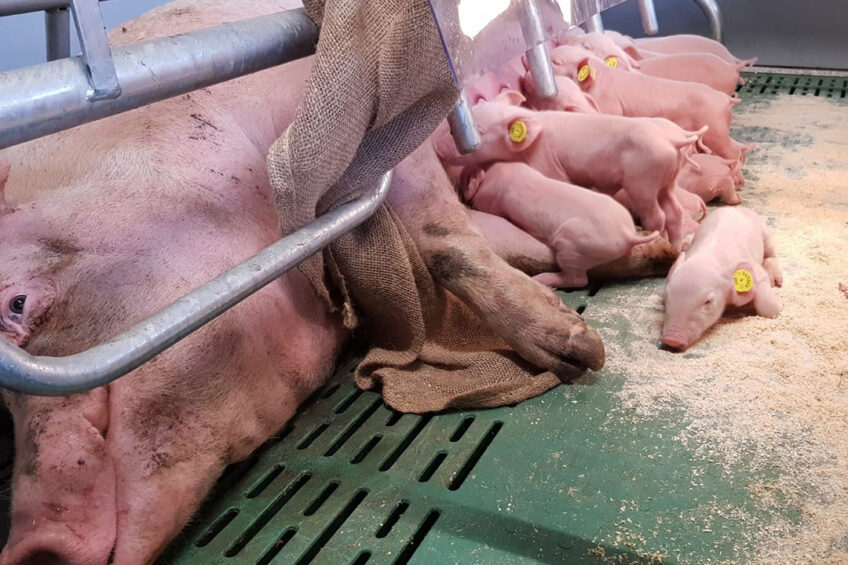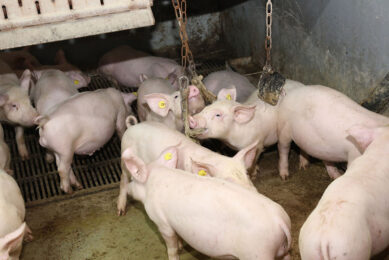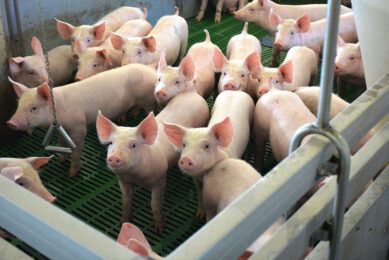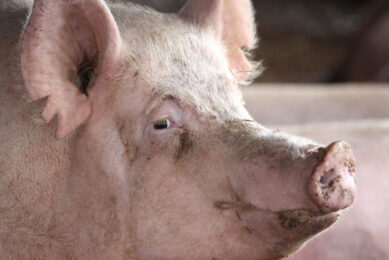Hormones: Essential to think of when feeding sows

Much attention is paid these days to the correct sow nutrition strategies during gestation and lactation. Yet what about hormonal levels, especially during the transition phase? In these phases of life, they play a pivotal role. As hormones are derived from nutrients, these components should not be forgotten.
The life of modern hyperprolific sows is much like running a marathon. They give birth to a large number of piglets and have to produce enough colostrum to give them a vital life start. A farrowing duration with ten- to 20-minute intervals between piglets is considered to be physiologically normal and is crucial to ensure that piglets are born alive and are vital at birth. Hormones, as well as nutrients, are known to play a critical role in regulating body functions during the transition period. For sows to win the farrowing marathon, a comprehensive nutritional approach is necessary, taking hormones into account.
Hormonal orchestration of a successful transition
For the gestating sow, the change from gestation to lactation is a major transition. For that to happen, a series of co-ordinated hormonal signals are given to the brain and several organs to prepare the sow for her new production state. The changes in hormones occur in the last week of gestation, a few days before farrowing.
Oestrogens, oxytocin and prolactin are key hormones that act and interact to prepare the sow’s body to give birth, express nesting and maternal behaviour and to produce colostrum and milk. For these hormones to increase as farrowing approaches, progesterone, “the pregnancy hormone”, must decline (Figure 1).
When progesterone levels do not drop sufficiently, or when the stress hormone levels are too high, oestrogens, prolactin and oxytocin are not produced at the proper levels. Low levels of these hormones near farrowing are associated with birth complications and low colostrum production in swine. Apart from reproductive and stress hormones, other hormones that regulate appetite, energy and calcium metabolism of sows are actively regulating body functions during the transition period. A few examples are the thyroid and parathyroid hormones insulin and calcitriol (the active form of vitamin D).
Nutrition and hormonal regulation
Like all molecules in the body, hormones are derived from nutrients, meaning that nutrition plays an important role in hormonal regulation. Progesterone and oestrogens are steroid (lipid) hormones derived from cholesterol. Oxytocin and prolactin are peptides (protein) hormones, derived from amino acids.
Enzymes are also involved in the production and activity of many hormones. For example, oestrogens are derived from progesterone, and this process is mediated by enzymes. Enzymes are composed of protein but require non-protein molecules (cofactors and coenzymes) for proper activity. These cofactors and coenzymes can be trace minerals or vitamins. Vitamins and trace minerals are also used in the antioxidant system, which plays an important role in maintaining a hormonal balance. A few examples of nutrients involved in hormone production, balance and function during transition are presented in Table 1.
Nutrient availability
Around the time of parturition, the modern highly prolific sows’ requirements for vitamins and trace minerals are very high. Sow productivity increases in the first 3 reproductive cycles and, as this happens, sow body (mineral) reserves decline. Therefore, after the third cycle, sows must be provided with greater amounts through the diet to meet their requirements. Deficiency of zinc, selenium, vitamin A and vitamin E are associated with prolonged parturition, increased stillbirth rates and lactation failure in swine. These nutritional components are involved in the production and function of hormones that regulate the farrowing process and colostrum production. Nutrient availability in the body is essential for proper body functions, and nutrition may impact directly or indirectly upon the hormonal balance of sows, especially older sows.

Other disturbing factors
Other factors known to disturb sows’ hormonal balance include:
- Stress: Sows are very sensitive to stress, and stress is one of the biggest causes of hormonal imbalances.
- Constipation: Constipation increases intestinal bacterial overgrowth and endotoxin absorption from the intestine, leading to unwanted inflammation in the body and hormonal imbalance.
- Excessive body condition: Several hormones are produced in fat tissues, including progesterone and leptin. Sows that are too fat have higher progesterone and leptin levels circulating in the blood. Sufficient decline of progesterone is necessary for proper uterine activity and colostrum production; levels of circulating progesterone that are too high will interfere in these processes. Leptin is a hormone that suppresses appetite, resulting in low feed intake and insufficient nutrient intake.
Importance of nutrition on hormonal balance
Much attention is given to the nutrition of sows in transition, but the importance of nutrition on proper hormonal balance during the transition period receives far less attention. The nutrient requirements of hyperprolific sows are affected by many physiological factors, yet feed and management strategies do not always take all factors into account.
Nutrition may affect, either directly or indirectly, the release or activity of hormones that interfere with the physiological process at farrowing. Feed intake and nutrient bioavailability must cover the requirements of sows to ensure proper body functioning in the days around farrowing.
At De Heus’ Swine Nutrition Centre in the Netherlands, research is being conducted to gain more insight into the nutritional strategies that support body functions of sows during this critical transition period.
Author:
Jackeline Hornstra, researcher swine, Royal De Heus
 Beheer
Beheer








 WP Admin
WP Admin  Bewerk bericht
Bewerk bericht